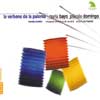Bretón (La) Verbena de la Paloma
Endless fun and gorgeous melodies in this toe-tapping example of the zarzuela
View record and artist detailsRecord and Artist Details
Composer or Director: Tomás Bretón
Genre:
Opera
Label: Astrée Naïve
Magazine Review Date: 10/2003
Media Format: CD or Download
Media Runtime: 46
Mastering:
Stereo
DDD
Catalogue Number: V4895

Tracks:
| Composition | Artist Credit |
|---|---|
| (La) Verbena de La Paloma |
Tomás Bretón, Composer
Alfonso Echeverría, Tabernero Ana Maria Amengual, Tía Antonia Antoni Ros Marbà, Conductor Enrique Baquerizo, Watchman, Baritone Jesús Castejón, Don Sebastián Madrid Comunidad Chorus Madrid Symphony Orchestra María Bayo, Susana, Soprano Milagros Martin, Cantaora, Soprano Plácido Domingo, Julián, Tenor Rafael Castejon, Don Hilarión Raquel Pierotti, Seña Rita, Soprano Silvia Tro, Casta, Mezzo soprano Tomás Bretón, Composer |
Author: Andrew Lamb
Like Arthur Sullivan, Tomás Bretón (1850-1923) was a cultured musician who composed symphonic and operatic works but found his greatest success with lighter fare. Specifically he did so with this classic example of the one-act genero chico that so captured the enthusiasm of Spain during the 1890s. The work itself captures superbly the Spanish taste for nocturnal revelry, especially at festival time, as here on the evening of the Festival of the Dove (August 14).
Though Plácido Domingo and María Bayo get top billing here, the central character of the piece is the randy old chemist Don Hilarión, a role written for a typical zarzuela ‘sort-of-singing’ actor. Hilarión arouses the jealousy of the young typesetter Julián (Domingo) by going to the festival with the latter’s beloved (Bayo) and her sister Casta – one on each arm. With a good complement of supporting comic characters, the piece offers endless fun and gorgeous Spanish dance melodies, most notably the popular habañera concertante ‘¿Dónde vas con mantón de Manila?’ In the solo that forms his main contribution Domingo shows not only his superb technique but also his love of the zarzuela genre. Bayo and Silvia Tro as the two sisters sing with sweetness and character, and Milagros Martín makes a splendid flamenco singer, rightly appreciated by the on-stage audience here.
The Spanish atmosphere is maintained also in the English notes, which bizarrely translate ‘reducciones para canto y piano’ as ‘cuts for voice and piano’ instead of ‘piano vocal score’. The work has been much recorded in Spain; but this is much the most modern version, uses a cleaned-up score (albeit with dialogue omitted), and is the obvious one through which to discover this delicious piece.
Though Plácido Domingo and María Bayo get top billing here, the central character of the piece is the randy old chemist Don Hilarión, a role written for a typical zarzuela ‘sort-of-singing’ actor. Hilarión arouses the jealousy of the young typesetter Julián (Domingo) by going to the festival with the latter’s beloved (Bayo) and her sister Casta – one on each arm. With a good complement of supporting comic characters, the piece offers endless fun and gorgeous Spanish dance melodies, most notably the popular habañera concertante ‘¿Dónde vas con mantón de Manila?’ In the solo that forms his main contribution Domingo shows not only his superb technique but also his love of the zarzuela genre. Bayo and Silvia Tro as the two sisters sing with sweetness and character, and Milagros Martín makes a splendid flamenco singer, rightly appreciated by the on-stage audience here.
The Spanish atmosphere is maintained also in the English notes, which bizarrely translate ‘reducciones para canto y piano’ as ‘cuts for voice and piano’ instead of ‘piano vocal score’. The work has been much recorded in Spain; but this is much the most modern version, uses a cleaned-up score (albeit with dialogue omitted), and is the obvious one through which to discover this delicious piece.
Discover the world's largest classical music catalogue with Presto Music.

Gramophone Digital Club
- Digital Edition
- Digital Archive
- Reviews Database
- Full website access
From £8.75 / month
Subscribe
Gramophone Full Club
- Print Edition
- Digital Edition
- Digital Archive
- Reviews Database
- Full website access
From £11.00 / month
Subscribe
If you are a library, university or other organisation that would be interested in an institutional subscription to Gramophone please click here for further information.




